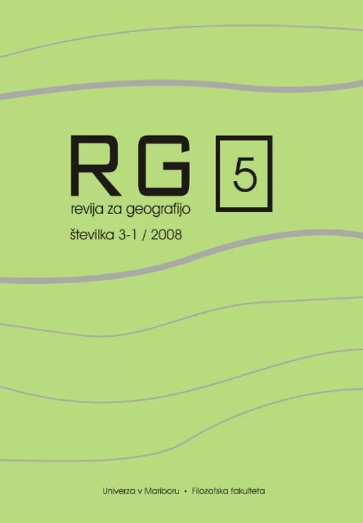Slovenian economy on the way from independence to catching up average economic development of EU - 27
DOI:
https://doi.org/10.18690/rg.3.1.3134Keywords:
EU accession, unified European market, Lisbon strategy, structural indicators, transition countries, competitiveness of the economyAbstract
During the EU accession process, an intensive process of economic restructuring was taking place in Slovenia that was intended to secure Slovenia’s incorporation into the common European market. At the time of adapting the legal and economic order to European standards, everyone was aware of the fact that successful EU spatial integration depends on the achieved economic power that is comparable to the average EU-27 economic growth. Slovenia’s economic structure, determined by the GDP structure, is slowly approaching the structure of developed economies with the importance of agriculture and manufacture decreasing, and the importance of services increasing. However, financial and business services, and technologically demanding sectors are growing too slowly. Structural changes of the Slovene economy have an affect on transformation of geographical space and create a new social-economic gravitational region.
Functional and structural economic changes that resulted from social and political changes following Slovenia’s newly-gained independence and its transition to market economy have changed the role of Slovenia in the common European economic market. Slovenia is to be found on a key development crossing, moving from an industrial to post industrial society. Slovenia’s basic development goal is to exceed the average economic development of the enlarged EU by 2015 to be able to secure and improve social security, faster development in all its regions, and improve the environment. In other words strive for a better quality of life and overall human development.
Downloads
References
Haggard S., Webb S.B. (1993): What do We Know About the Political Economy of Economic Policy Reforms? The World Bank Research Observe.
Lorber, L., 2002: Slovenia's Changed Geographical – Economical Position in Comparison with Neighbouring Countries after 1991. Zbornik radova Problemi regionalnog razvoja Hrvatske i susednjih zemalja, Hrvatsko geografsko društvo, Zagreb.
Lorber, L., 2005: The Influence of EU Enlargement process on Structural Changes of Slovenia's Economy. Erwartungen und erste Ergebnisse der EU – Erweiterung (Tagung des Forschungssechsecks der Universitaten Bayreuth, Bratislava, Graz, Maribor, Pecs und Plzen), Arbeitsmaterialien zur Raumordnung und Raumplanung, Heft 238, Bayreuth.
Lorber, L., 2006: Strukturne spremembe mariborskega gospodarstva po letu 1991. Revija za geografijo, 2006, 1, št. 1. https://doi.org/10.18690/rg.1.1.2875
Lorber, L., 2008: Sloweniens Weg von einer Agrargesellschaft zum postindustriellen Staat. V: ALBRECHT, Volker (ur.), DROZG, Vladimir (ur.), ALBRECHT, Volker. Slowenien : Transformationen und kleinräumige Vielfalt, (Natur - Raum - Gesellschaft, Bd. 5). Frankfurt am Main: Institut für Humangeographie, 2008, str. 186-206, ilustr.
Parker, P., 2000: Global Oppotunities and Regional Strategies: Contrasting Canada's Technology Triangle and Australia's Multi – Function Polis. V Regional Cohesion and Competition in the Age of Globalization.
Stråth, Bo (2003): The Meanings of Europe, http://www.helsinki.fi/nes/the%20meanings%20of%20europe%20helsinki.pdf
http://epp.eurostat.ec.europa.eu/portal/
http://europa.eu.int/comm/lisbon_strategy
http://www.stat.si/letopis/index_letopis.asp
